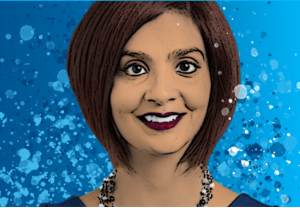By Erica Rascón on July 30, 2019 in People

Welcome to our third segment of the Senior Housing News (SHN) series, The Changemakers, sponsored by Yardi. These interviews demonstrate how adaptability and innovation pave the way for success.
Shamim Wu, COO of Eclipse Senior Living, has been trailblazing for decades. With an emphasis on creating diverse, tech-driven workplaces, she has built a company that operates 100 senior living properties—and growing.
While many companies scramble to appeal to Millennials, Wu has managed to assemble “a team made up of men and women across four generations, across almost every ethnicity and race that you can think of.” The diversity of her team and the wealth of ideas and experiences that it brings are her greatest accomplishments, she says.
Eclipse has also placed work-life balance as a pinnacle of company culture. Employees receive unlimited time off to accommodate what life throws at them, whether it’s time with a sick loved one, welcoming a new addition to the family, or simply spending much needed time in nature.
“We don’t just encourage people to have a life outside of work, we almost demand it,” said Wu.
Tech integration is also woven into the culture. Eclipse has invested heavily in enterprise technology systems that increase efficiencies, collaboration, and visibility. Without mind-numbing administrative tasks to pour over, team members are free to focus on what matters: proactively adjusting to the demands of the industry with agility, accuracy, and customer focus.
Wu talked to SHN about the Eclipse approach to the changing industry:
Eclipse is on the leading edge of another change in the industry, which is the multi-brand strategy. How is that working?
Wu: We’ve seen best practices in brand stratification in other areas, like hospitality. You’ve got Hilton Hotels, which has a certain cachet because of the Hilton brand. But within that umbrella, they have 30 distinct brands that appeal to a variety of different groups of people.
I think retail has also done a really great job. I’m a 90s kid, so The Gap brand resonated with me at a fairly young age. As I’ve gotten married and had children, when I make a decision to get a pair of jeans for my husband, I’m going to go to Banana Republic, because I know the Gap brand. I’m loyal to it. Whereas if I’m shopping for my kids, I’m going to go to Old Navy because it’s a brand that I know has the quality of Gap, but it is marketed and speaks to me as a mother and appeals to my children as 11 and 9 year olds. I think that’s what you see happening with senior housing as baby boomers are coming into the space.
They’re a generation that we know makes decisions based on needs, on price, but has values based on wants. And we’re going to have to create brands that speak to both of those things, that offer more amenities, that speak to different income levels and different acuity levels.
Brand stratification is really the only way. You have not only a 12-year age gap [between the oldest and youngest boomers], which is almost a generation in and of itself, but baby boomers pride themselves on customization. And so having niche brands that speak to each of those cohorts within the generation is going to be key.
You’re not just talking about giving communities different names, but creating more strategic differentiation.
Wu: Exactly. It’s not just about location or name. It’s about what’s happening inside that community that is distinctive enough for a certain niche, but belongs to a brand where you know that you can rely on certain things.
It can be stratified on a multitude of things. Acuity, product type, suburban versus urban, income. It’s really around, what is the mission and the intent of the brand?
We’re primarily focused on brand stratification as we look at the axis of income and acuity. That may evolve and change, but that’s how we’re positioning ourselves. We created two middle market brands, because we believe, and the data supports it, that the middle market is severely underserved.
We’ve currently broken out a middle market assisted living and memory care brand, and a middle market independent living brand. As we grow the company, we will likely have brands that speak to higher incomes, higher acuity, lower acuity.
Read the entire interview on SHN.


